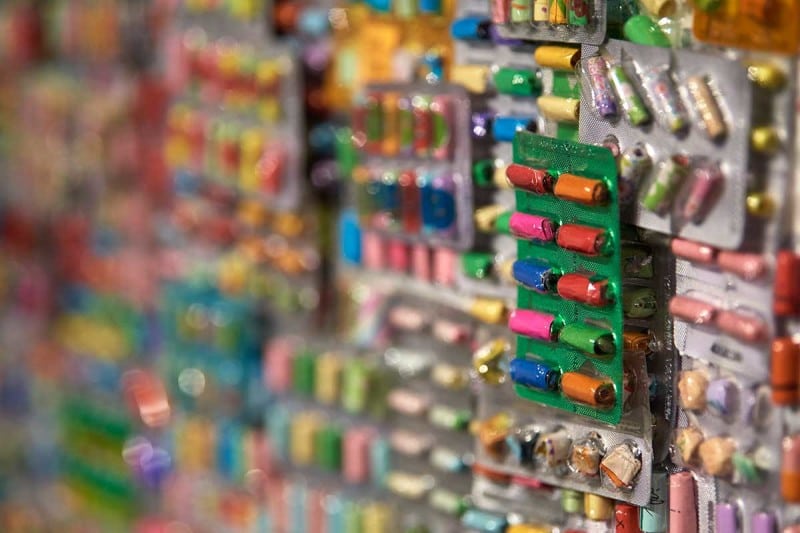
Scar is mounted on the wall of a small, brand-new gallery space in Edinburgh’s Surgeons’ Museums. Because of the way the room is laid out, this is probably the last piece you will come to. And that’s good, as Scar offers the perfect coda to Zhang Yanzi’s solo show A Quest for Healing.
Scar is modelled on a surgical bed Zhang spotted at the Hong Kong Museum of Medical Sciences. (The building itself was where treatments were developed for the bubonic plague, which raged in Hong Kong even into the 20th century.) It’s a violent and terrible cruciform structure, wrapped in bloody bandages – or at least, that’s my first impression. I step closer: the “blood” is ink made of cinnabar, a vermilion-red pigment traditionally used in Chinese painting. Zhang, one of China’s foremost contemporary artists, is no stranger to traditional techniques; much of her work has its roots in the artistic and poetic depictions of landscape known as Shan shui
And those “bloody” smears and stains turn out to be exquisitely detailed miniature scenes of flowing water, framed by “hillsides” of calligraphy, combining poetry with Zhang’s private thoughts. What at a distance seemed to be a work about violent medical intervention, becomes, closer in, to be something deeply personal, calming – even kind.
The stereotypical view of contemporary art is that it’s too clever for its own good and heartless with it, constantly tripping the unwary viewer into moments of horrified realisation (ever looked closely at a Grayson Perry pot?) Zhang’s work pushes in the opposite direction. In the centre of the gallery, an outsize felt-covered “broken heart” is pierced with thousands of acupuncture needles. This is shocking enough, but only until the eye adjusts and you realise that those pins – so fine, and so many – are more likely cushioning the heart from further assault.
A Quest for Healing is not a sentimental show. Several pieces convey a powerful sense of human fragility. The most colourful piece here is also the most daunting: a wall-mounted pyramid of medical blister packs, their pills removed and replaced by strips of paper on which schoolchildren – thousands of them – have inscribed their prayers and wishes for the future. The weight of expectation borne by Wishing Capsules (pictured above) feels positively oppressive.
Then there are the linked drawings of Limitless, filling one wall with exquisitely drawn ants – half living things, half calligraphy, massing like clouds of stars. You can’t separate these tiny figures from each other, but then again, you can’t write the whole lot off as a mere texture, either.
Artists who dabble in medicine are a dime a dozen. Zhang is different. She’s steeped in this imagery, growing up in Jiangsu Province in the 1970s, playing with her doctor father’s stethoscope. While by no means rejecting Western medicine, Zhang makes us aware how much more effectively the Chinese tradition gets us to think about mortality, and time, and the nature of being a material body: yearning, growing, dying. And the work that results from all this? A Quest for Healing is, simply, the most humane art about medicine I have seen in years.
